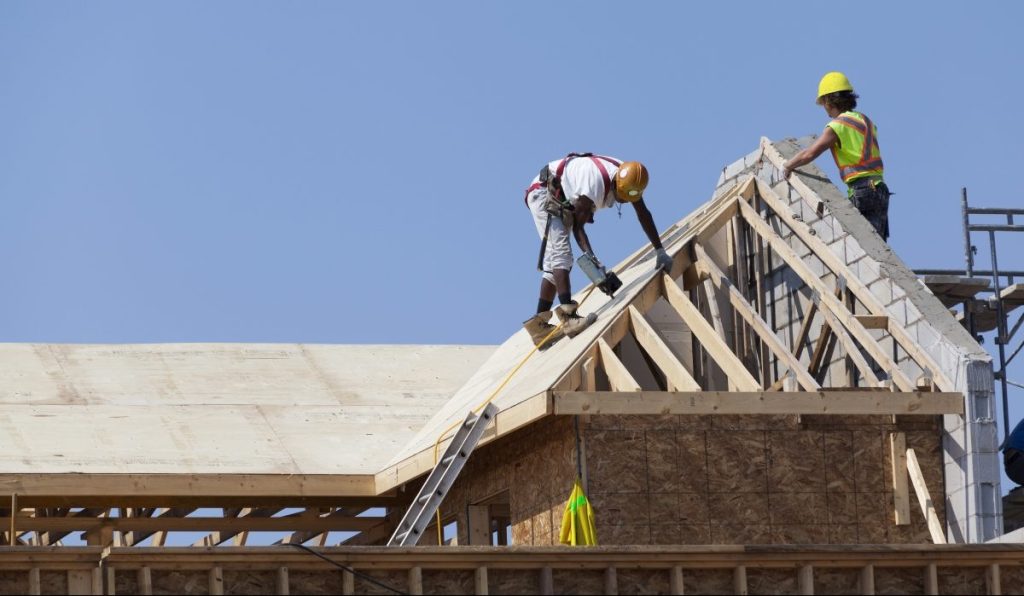Single-family housing starts gained for the sixth consecutive month in October on an annualized pace not seen since April 2007, a Census Bureau report released Wednesday revealed.
Housing starts overall rose 4.9% in October compared to September’s pace and to a seasonally adjusted annual pace of 1.53 million starts – the highest since this February. That growth was mostly driven by single-family housing starts, which increased 6.4% month-over-month – up 1.18 million annualized units. Multifamily starts were virtually unchanged from September’s revised number.
“We expect the paths of single-family and multifamily starts to continue to diverge in the coming months,” said Doug Duncan, Chief Economist at Fannie Mae. “Low interest rates, a tight supply of existing homes for sale, and a trend towards purchasing homes in suburban areas has contributed to strong demand for new single-family homes. In contrast, we believe a suburban shift and other COVID-19-related dynamics are putting downward pressure on multifamily demand in many urban areas.”
Duncan noted the pace of new home sales over the past six months has accelerated more quickly than the construction pace, suggesting homebuilders will have to play catch up relative to sales going forward.
Single-family authorizations in October were at a rate of 1.12 million, up 0.6% above the revised September figure of 1.11 million. However, actual housing completions faltered slightly in October – down 3.4% from September’s 914,000 to a rate of 883,000.
According to Odeta Kushi, chief economist at First American, the construction industry faces several supply-side headwinds like increasing material costs (specifically rising lumber costs), a chronic lack of construction workers, a dearth of buildable lots, and restrictive regulatory requirements in many markets.
“The current housing market is characterized by robust demand, but not enough homes for sale,” Kushi said. “There are signs that this situation may improve in the months to come. In October, single-family housing starts increased to a post-Great Recession high, increasing 29% from October 2019 as builders overcame these headwinds and broke ground on more homes. Single-family housing permits, a leading indicator of future starts, also increased by nearly 21% relative to one year ago.”
The rise in single-family permits in conjunction with the rise in construction employment in October signals an upward trajectory for housing starts looking ahead, Kushi noted.
Beyond employment, the National Association of Home Builder’s housing market index revealed builder confidence is at an all time high. However, Zillow economist Matthew Speakman said it’s going to take more than just confidence to meet demand.
“Home builders have their foot on the gas, but given sky-high levels of builder optimism it feels like they’re still leaving a good bit in the tank. But this surge in optimism continues to translate to only modest growth in home building activity,” Speakman said. “Housing starts through October are up 6.7% compared to the same period in 2019, and were revised up for September, a small indication that builders are finding ways to expedite projects and get to work when and where they can.
“Even so, volatile materials costs and a shortage of available land continue to hold builders back from truly hitting their stride. And flat permitting activity shows that the future project pipeline isn’t exactly overflowing. As a result, it appears that builders are being more selective with the jobs they take on, with most opting to embark on single-family projects,” Speakman said.
Though selectivity may be a factor, Duncan also sees a slower pace of growth coming.
“Both single-family housing permits and the number of homes authorized-but-not-yet-started were essentially flat over the month, which we believe suggests that the rapid phase of recovery may soon be ending and that further gains will likely be more modest going forward,” Duncan said.
The Mortgage Bankers Association’s November forecast included expectations that a strong pace of single-family home starts will continue well in to 2021.
According to Joel Kan, MBA’s associate vice president of economic and industry forecasting, that boost in starts should be enough to support the frenzied demand, while still seeing strong home price growth. Kan said a combination of the two trends will lead to a record year of purchase originations in 2021.





